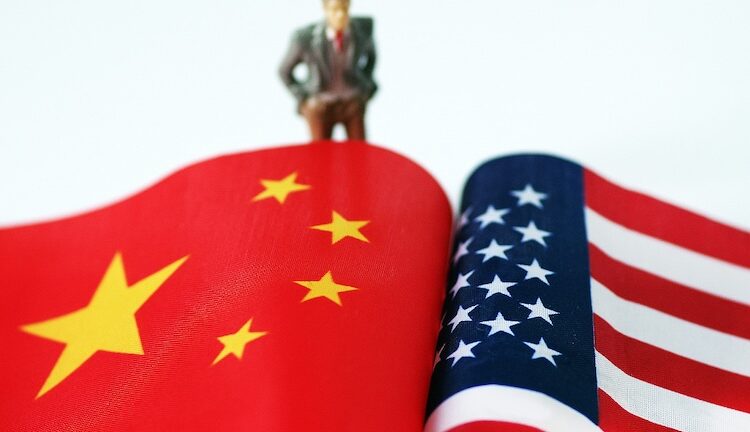By Jonathan Power*
LUND, Sweden | 20 May 2025 (IDN) — President Donald Trump’s antagonism towards China existed before the Coronavirus. Despite his bonhomie with President Jinping Xi whenever he meets him, he has gone all out with his trade war. He refuses to negotiate an extension of the nuclear weapons reduction agreement with Russia unless China (a relatively small nuclear power) is brought into the deal, which Russia interprets understandably as a go-slow tactic.
Trump plays into a very old-time visceral fear of the “yellow peril”, which not so long ago was a minority feeling in America. But he has managed to whip up a broad swathe of public opinion to be anti-China. The Democrats (and much of the media) have followed him. Not just Joe Biden but also senators Bernie Sanders and Elizabeth Warren, even though their attacks have been less pointed.
This goes nowhere. What’s the point of it? In the end, the US will lose. China has a population of four times as much. Before that long, it will begin to match the US’s income per head, at least in its eastern, more developed and more populated parts. Its high technology is already ahead of the West’s in many areas. Its military budget is increasing (but not by much).
Where does this hostility come from? The late Harvard professor Samuel Huntington, famous for his book, “The Clash of Civilizations, in which he predicted war between the Islamic world and the West, wrote as well about the gulf between the US-led West and Chinese civilization, which he also believed was set for a head-on violent collision.
“Americans see government as a necessary evil”, writes Graham Allison, another Harvard professor, “and believe that the state’s tendency toward tyranny and abuse of power must be feared and constrained. For the Chinese, the government is necessary, the fundamental pillar ensuring order and preventing chaos……China’s equivalent of ‘give me liberty or give me death’ would be ‘give me a harmonious community or give me death’.”
Both countries believe they are number one in the world. Both have an extreme superiority complex. Both think they are exceptional. But, unlike China, the US has sought to prevent the emergence of a “peer competitor” that could challenge its military dominance. (This is aimed against Western Europe, Russia, and China.)
America wants to export its concepts of democracy and human rights. As Henry Kissinger noted, China does “not export its ideas but let others come to seek them”. China thinks that the US pushes for these virtues as a tactic to undermine its form of government. (Interestingly, there have been human rights courses at some Chinese universities that are independent in content.)
Cultural Difference
Then, there is a profound cultural difference. Americans tend to focus on the present and too easily forget the lessons of the past- as with the Korean War, the Vietnam War and the Iraqi wars. The novelist Gore Vidal has noted his country should be called “The United States of Amnesia”. The Chinese are more historically minded and often think of decades or generations.
China has not gone to war since 1979. For its part, the US has attempted regime change around the world 72 times. Nor has China-funded or supported proxies or armed insurgents since the early 1980s.
Unique
Fareed Zakaria states, “That record of non-intervention is unique among the world’s great powers. Beijing is now the second largest funder of the United Nations and its peacekeeping work. It has deployed 2,500 peacekeepers, more than all the other permanent members of the Security Council combined. This highlights the remarkable shift from a radical agenda of spreading revolution to a conservative concern for stability. It has become a guardian of the international status quo. Few would have believed it possible had someone predicted this in 1972”. China has come a long way since the aggressive days of Mao Zedong, whereas the US appears to have gone backwards in some ways.
As for trade, the international bank Credit Suisse said back in 2015 that a tally of 450 non-tariff barriers (which include technology and subsidies) against foreign goods put in place by major countries showed that the US is in a league of its own as number one. One can see from this that Trump’s recent conflict with China is no new thing. China is fifth on the list.
In a survey of US companies conducted by the US-China Business Council, intellectual property protection ranked sixth on a list of pressing concerns, down from number two in 2014. That year, China created its first specialized courts to handle intellectual property cases. In 2015, foreign plaintiffs brought 63 cases to the court. The court ruled for the foreign firms in all cases. (Of course, this was before the latest Trump onslaught.)
Trump’s case against China regarding the Coronavirus, military posture, and trade is wildly exaggerated. It needs to stop being made. The former US Secretary of State Mike Pompeo has said the West must keep China in “its proper place”. This gets us exactly nowhere.
The debate over who is right and who is wrong in the discussion of the necessity of trade barriers could become a watershed moment in the relationship between the US and China. Nothing could be more counterproductive. Nothing could be more damaging to the peace of the world.
*Jonathan Power has been an international foreign affairs columnist for over 40 years and a columnist and commentator for the International Herald Tribune (now the New York Times) for 17 years. [IDN-InDepthNews]
Copyright © Jonathan Power
Visit www.jonathanpowerjournalist.com
Image source: China Daily. Credit: VCG


